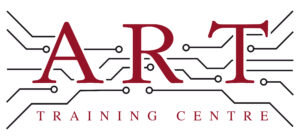Definition
Soldering Iron is a handheld tool used in electronics manufacturing to heat solder, a metal alloy, allowing it to melt and join electronic components to printed circuit boards (PCBs). It is a crucial component in the assembly and repair of electronic devices, enabling reliable electrical connections. The soldering iron typically has a heated tip that reaches high temperatures, facilitating the soldering process.
How It’s Used in the Industry
The Soldering Iron is essential in electronics assembly, particularly when soldering components onto PCBs. Technicians first prepare the PCB and components by cleaning the surfaces. Next, they heat the soldering iron and apply it to the joint where the component leads meet the PCB pads. Solder is then introduced to the heated joint, melting and creating a secure connection upon cooling. This process is vital for both new assemblies and rework, ensuring that connections are reliable. For technicians in training, mastering soldering techniques is fundamental, while experienced professionals rely on precision soldering for high-quality outcomes.
History & Origins
The Soldering Iron became common in electronics manufacturing in the mid-20th century, coinciding with the rise of consumer electronics. Early soldering tools were simple and manual, but advancements in technology led to the development of electric soldering irons. As standards like IPC (Institute for Printed Circuits) emerged, they established guidelines for soldering practices, ensuring consistency and quality in electronic assembly. This evolution made soldering irons indispensable in the industry, enhancing the reliability of electronic products.
Variations
There are several variations of the Soldering Iron, including temperature-controlled models, which allow users to set specific heat levels for different solder types. Other types include soldering stations that combine a soldering iron with a power supply and additional tools. Compared to other soldering methods, such as hot air rework stations or wave soldering, soldering irons offer precision for small-scale work and repairs. Understanding these variations helps learners choose the right tool for specific tasks in electronics manufacturing.
Modern Applications
Today, the Soldering Iron is widely used in electronics production and repair, particularly for surface mount and through-hole components. In professional training, it remains a fundamental skill, as technicians learn to create reliable solder joints that meet IPC standards. The importance of soldering irons in ensuring the quality and reliability of electronic devices cannot be overstated, as they are critical for both new assembly and maintenance of existing products.
Practical Tips & Training
When working with a Soldering Iron, always prioritise safety by using protective eyewear and working in a well-ventilated area. Inspect solder joints for quality, ensuring they are smooth and shiny without excess solder. Useful tools include soldering aids like tweezers and flux pens to improve the soldering process. Structured training and certification in soldering techniques are essential for developing skills and ensuring adherence to industry standards, contributing to successful electronics assembly.


